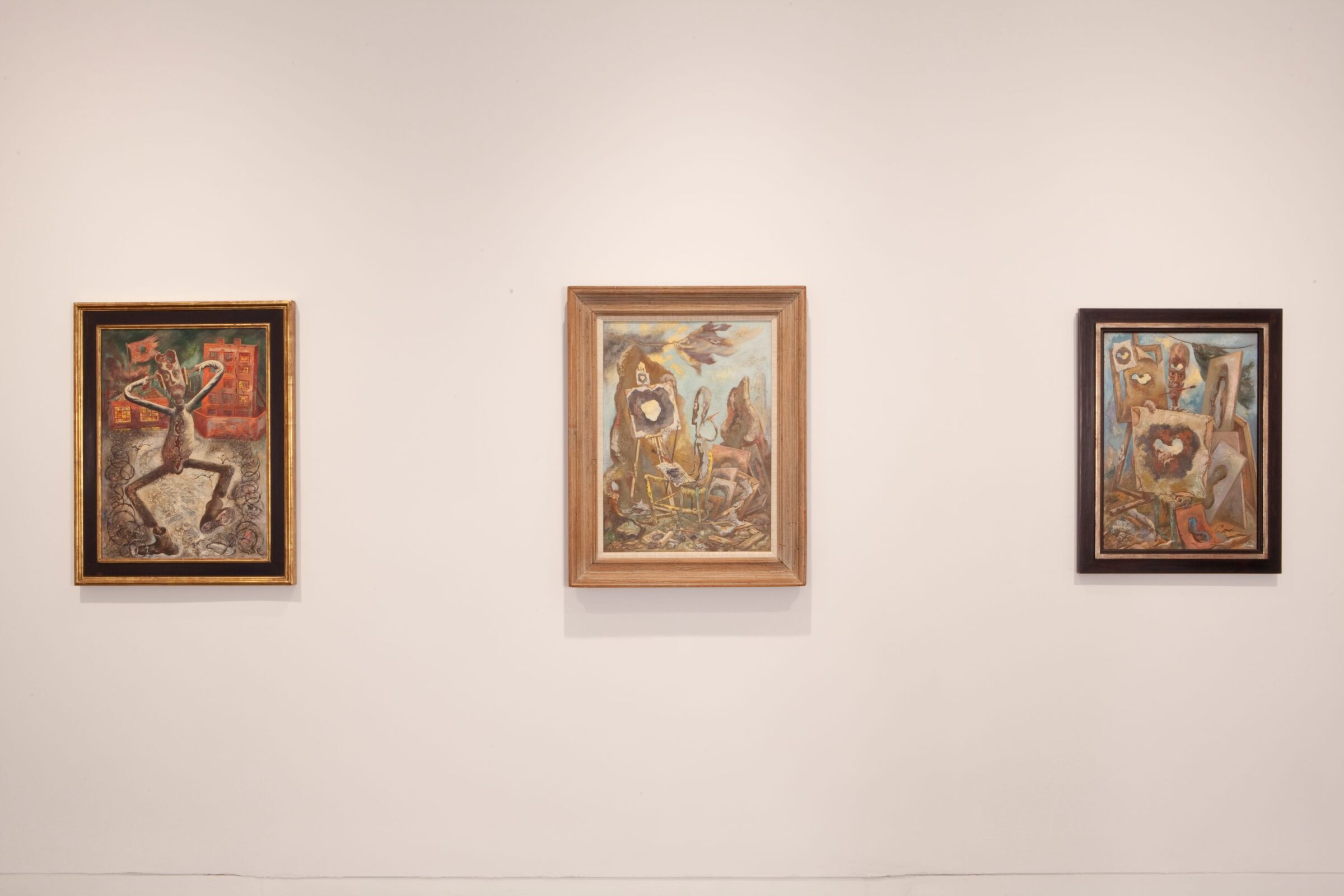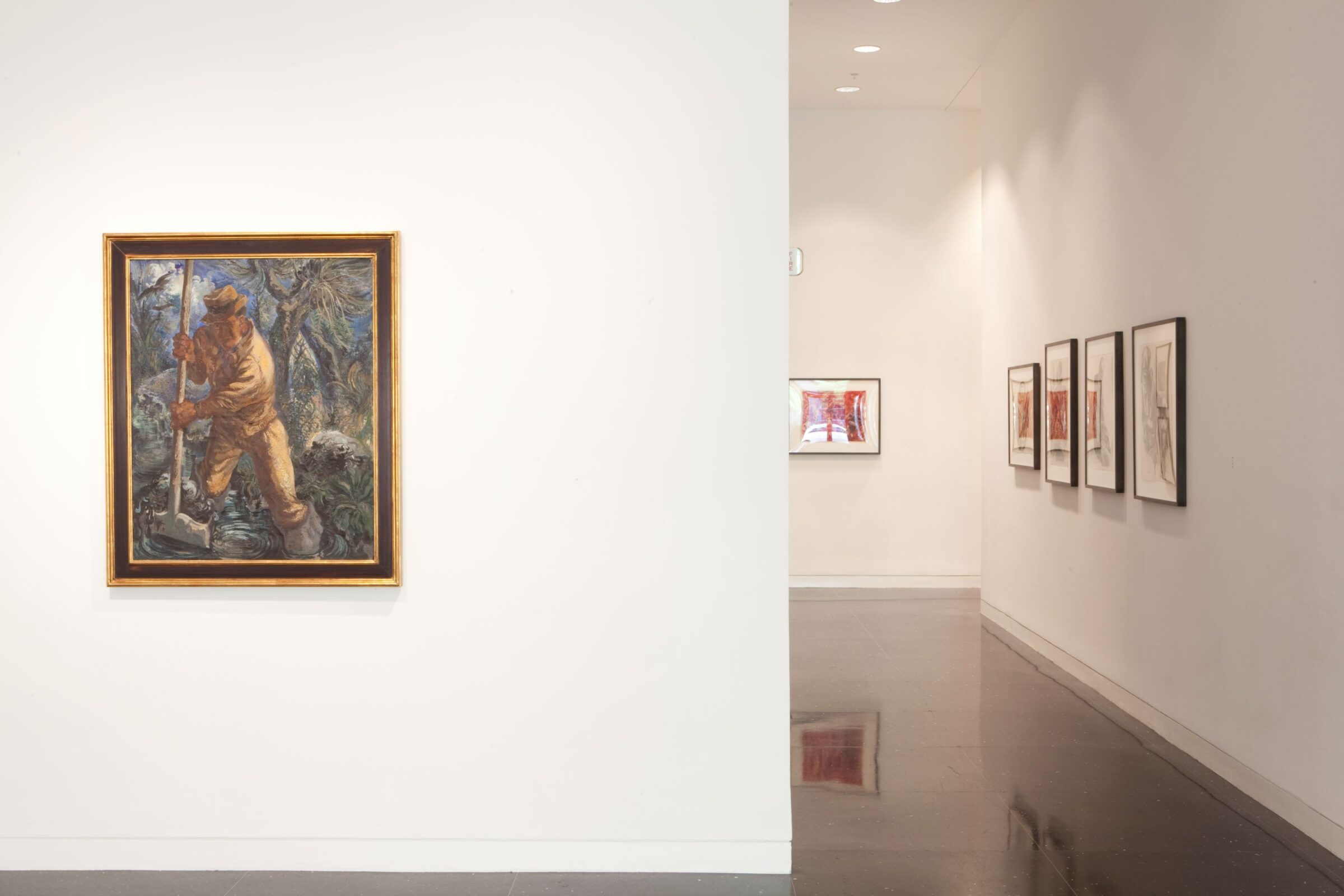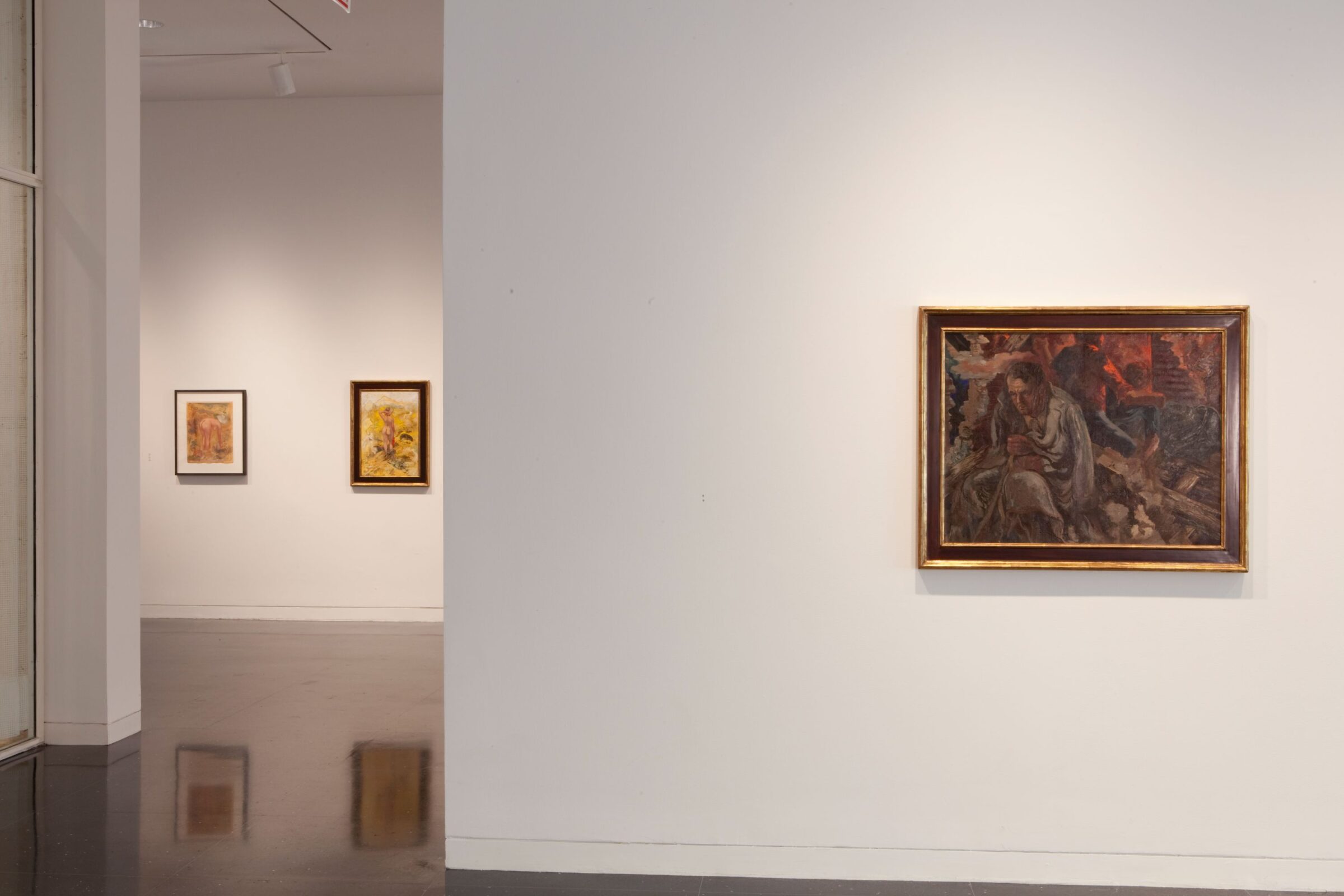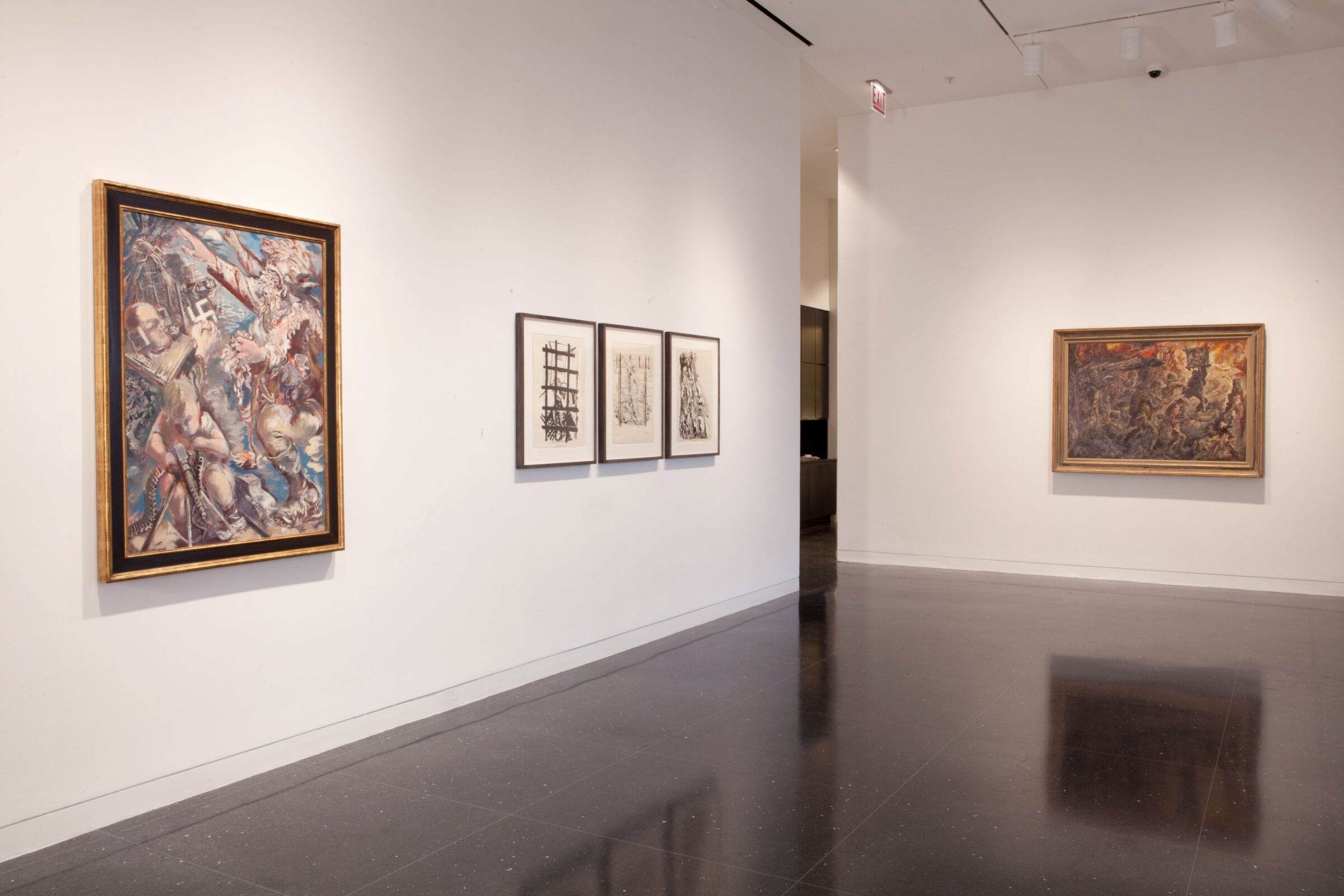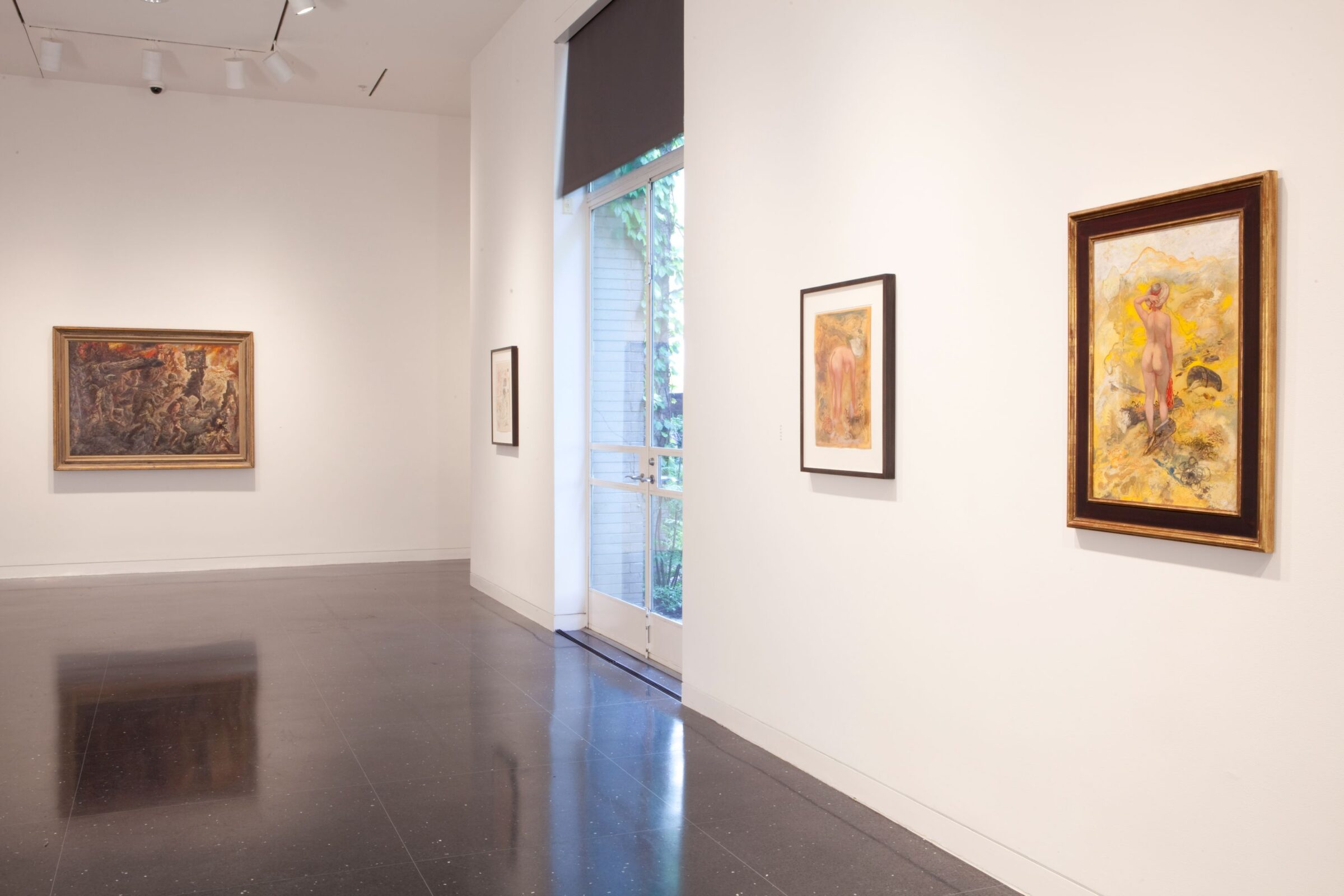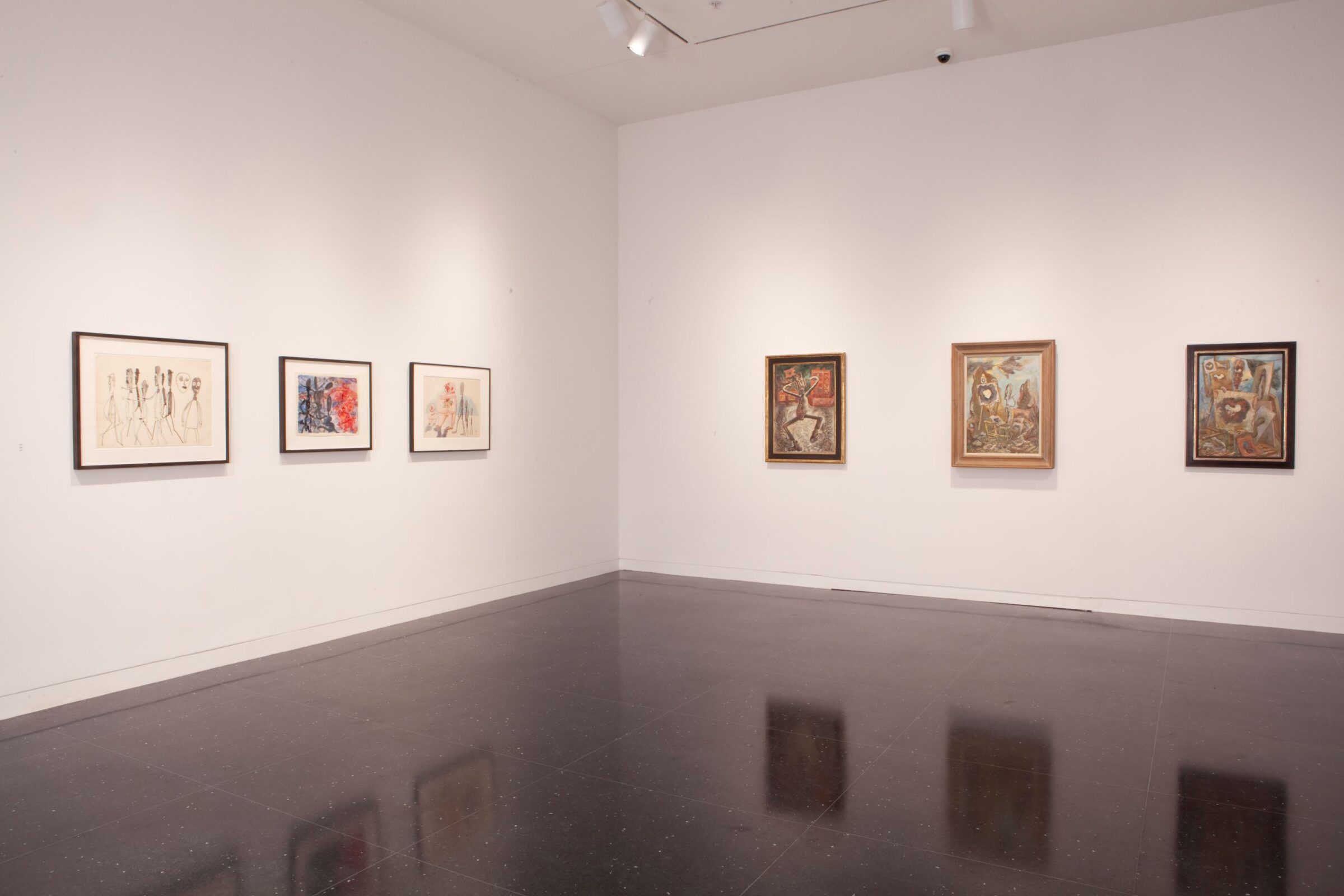George GroszIn America 1933–1958
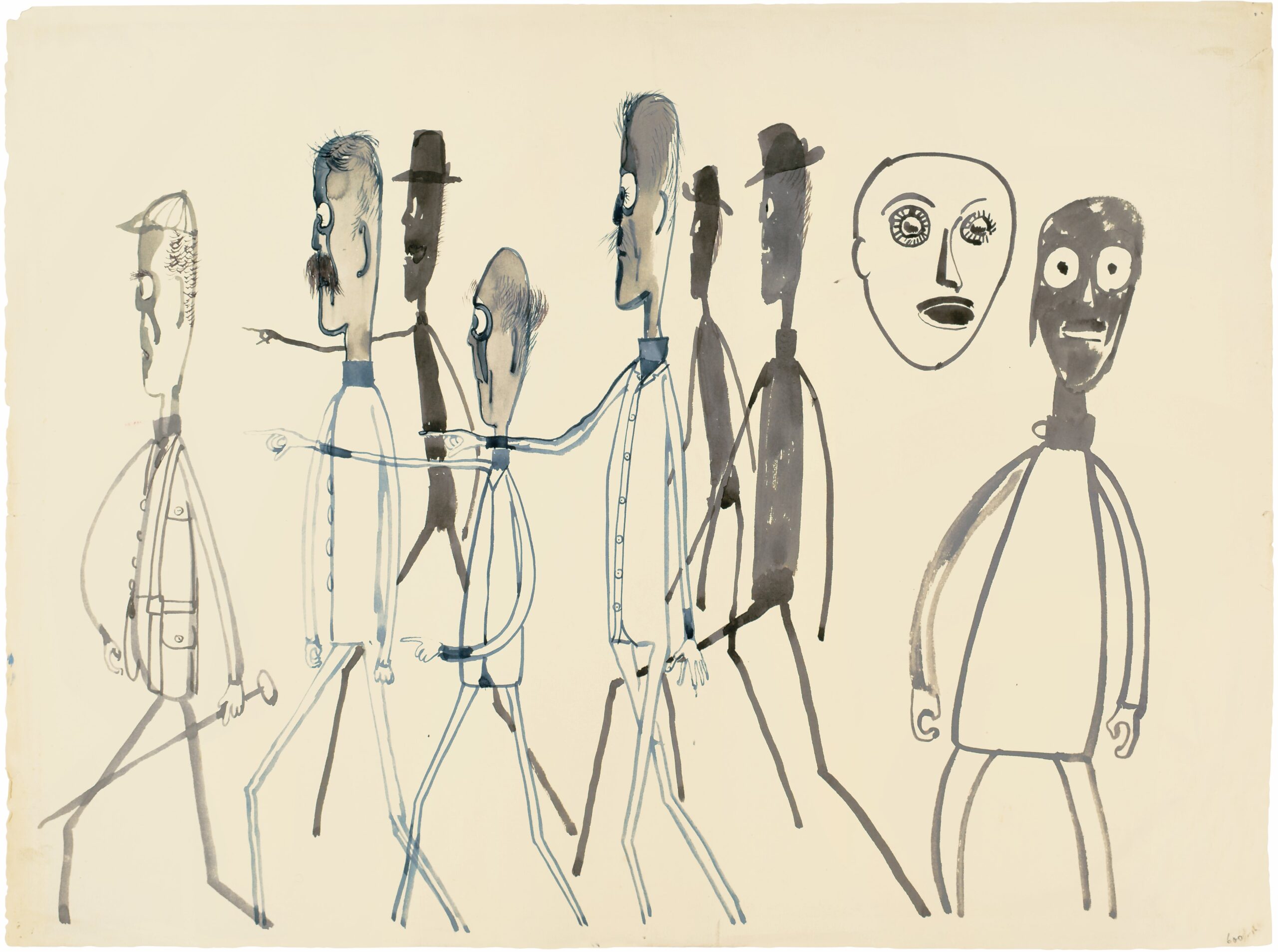
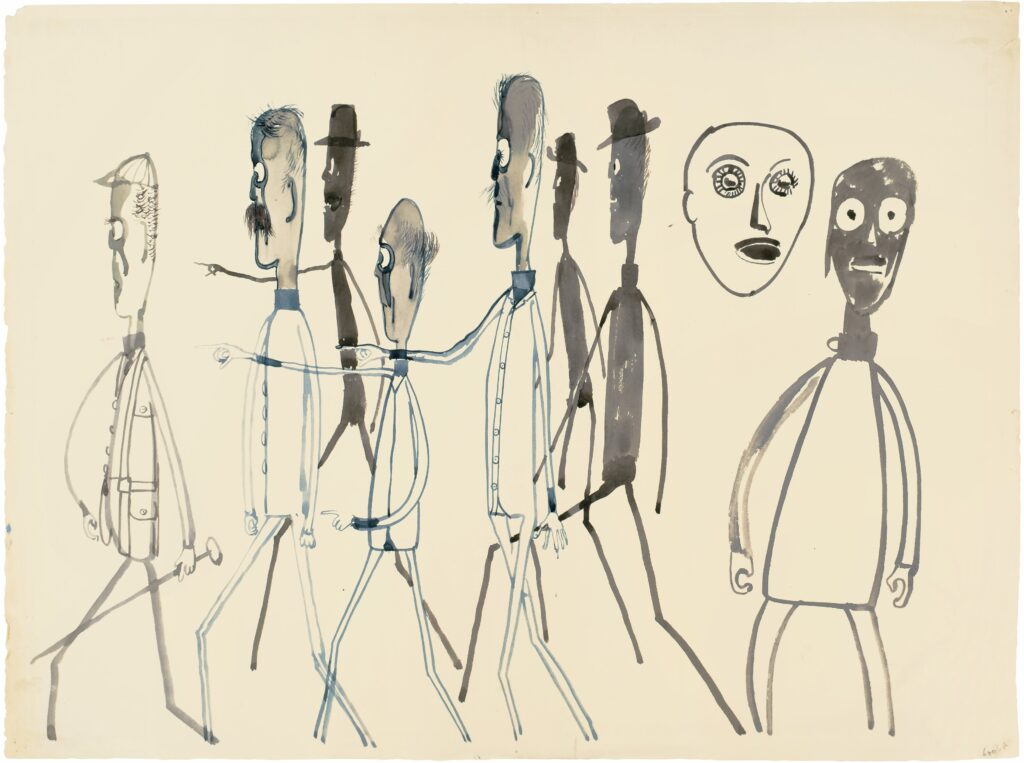
Past exhibition
George Grosz In America 1933–1958
About the Exhibition
The Arts Club of Chicago is pleased to announce the installation of the exhibition George Grosz in America 1933–1958. The exhibition is a unique opportunity to view the later, lesser known, work of an important and provocative modern artist. Included in the exhibition are major oil paintings from 1936 to 1950, such as the epic A Piece of My World II/The Last Battalion (1938) and two versions of the The Painter of the Hole I (1948) and The Painter of the Hole II (1950); works on paper in pen-and-ink, charcoal, and watercolor, many done for his own albums or as illustrations for magazines and books; and the collages from the late 1950s that hark back to his early Dada works.
Grosz is known for the work he produced in the 1910s and 1920s at the beginning of his career while living in Germany. His strident, caustic between-the-wars paintings and works on paper are the model of satire by a rebellious underdog. He left Germany in 1933, only weeks before the Nazis declared him an enemy of the state, raided his apartment, and confiscated his art. In America he continued to produce work that railed against greed and brutality, but created from his new vantage point the art did not carry the same impact. His portfolios of watercolors, prints and drawings were not successful, and many assigned the American output to a lesser status. Grosz continued to produce serious paintings and works on paper until his death in 1959. He was in yearly exhibitions throughout the country; at the Art Institute of Chicago in the 1930s and 1940s, with a retrospective in 1938; at The Arts Club (Watercolors and Drawings by George Grosz) in 1933; and at the Whitney Museum of American Art in 1954 with a retrospective. He was named one of the ten most important artists in the United States in a Look magazine poll by museum directors and critics in 1948.
The American work continues to reflect Grosz’s position within, and in relation to, society. He understood his previous antagonistic posture was not sustainable in America and attempted to “adapt properly to the American way of life.” He used self-portraiture to portray the outcast, and the trauma of exile as in Self-Portrait with Bird of Prey and Rat (1940). His portrayal of war and man’s propensity for war appears in the early battle works, both in oil and on paper, and in the later figures of stickmen and the painters of the hole, representations of man’s inhumanity and spiritual vacuum. Among his more difficult pictures to reconcile are the paintings of lone female nudes in the landscape such as Nude in the Dunes (1948). Continually haunted by war, violence, displacement and exile, Grosz’s art is as tough as his epoch, offering little transcendence or catharsis.
A catalogue accompanies the exhibition with an essay by Stephanie D’Alessandro, Gary C. and Frances Comer Curator of Modern Art at the Art Institute of Chicago.
